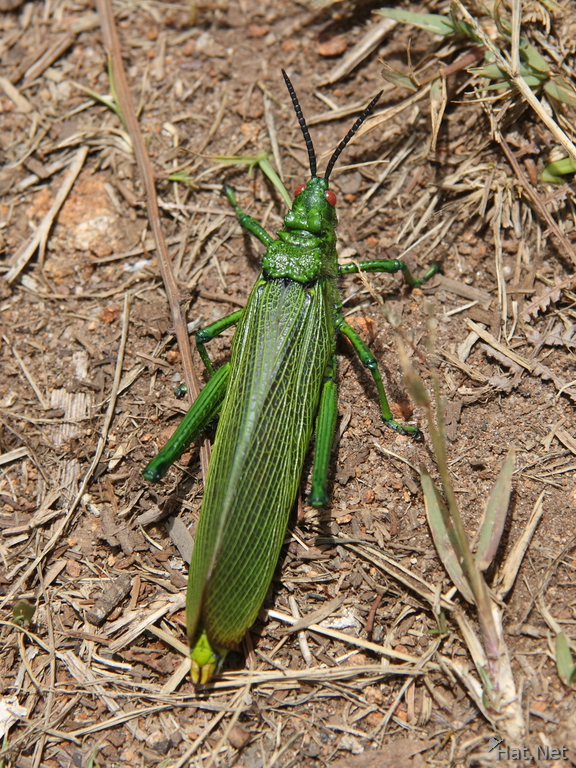giant grasshopper, hoppers
Grasshoppers have antennae that are almost always shorter than the body (sometimes filamentous), and short ovipositors. Those species that make easily heard noises usually do so by rubbing the hind femurs against the forewings or abdomen (stridulation), or by snapping the wings in flight. Tympana, if present, are on the sides of the first abdominal segment. The hind femora are typically long and strong, fitted for leaping. Generally they are winged, but hind wings are membranous while front wings (tegmina) are coriaceous and not fit for flight. Females are normally larger than males, with short ovipositors.
They are easily confused with the other sub-order of Orthoptera, Ensifera, but are different in many aspects, such as the number of segments in their antennae and structure of the ovipositor, as well as the location of the tympana and modes of sound production. Ensiferans have antennae with at least 30 segments, and caeliferans have fewer. In evolutionary terms, the split between the Caelifera and the Ensifera is no more recent than the Permo-Triassic boundary (Zeuner 1939).
| Itinerary | . feeling: neutral, slighly upbeat | ||
|---|---|---|---|
| Country | Tanzania | State | East Africa |
| City | Mtae | Weather | Rain |
| Continent | Africa | Day | Usambara |
| Activity | village walk | Feeling | neutral |
| Date | 2007:10:17 12:09:36 | Make | Canon |
| Model | Canon EOS DIGITAL REBEL XTi | Width | 1944 |
| Height | 2592 | Flash | Off, Did not fire |
| Focal | 85.0 mm | Exposure | 1/800 |
| F Number | 5.6 | ISO | 200 |
| White Bal. | Auto | Program | Aperture-priority AE |
| Compensation | 0 | Hyperfocal | 69.49 m |
| Latitude | -4.51046388888889 | Longitude | 38.2524361111111 |
| Altitude | 1954.066667 m | File Size | 4.9 MB |

